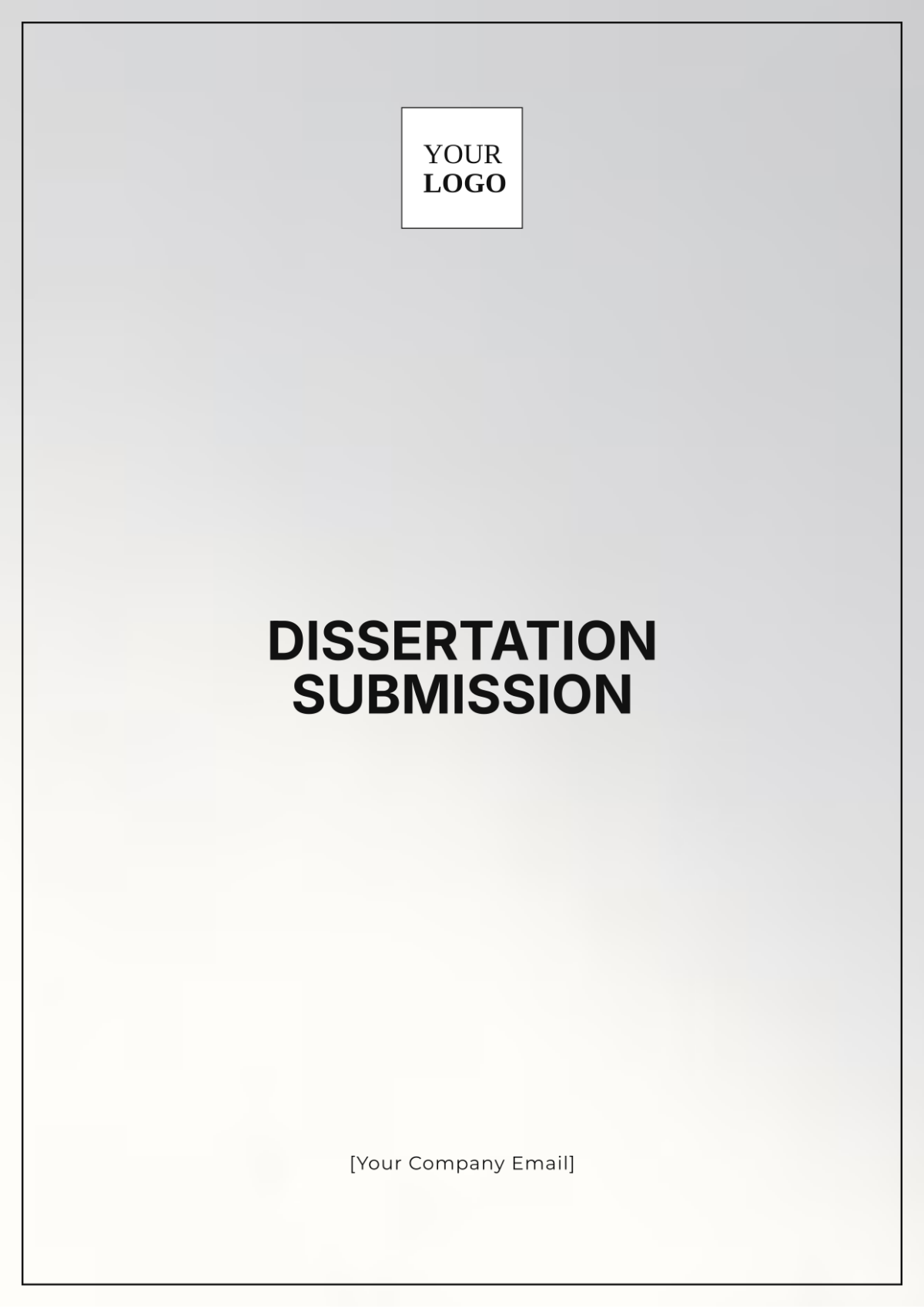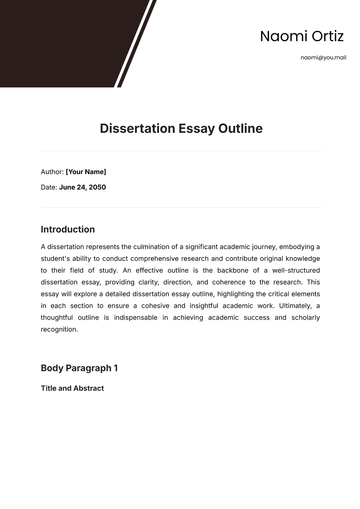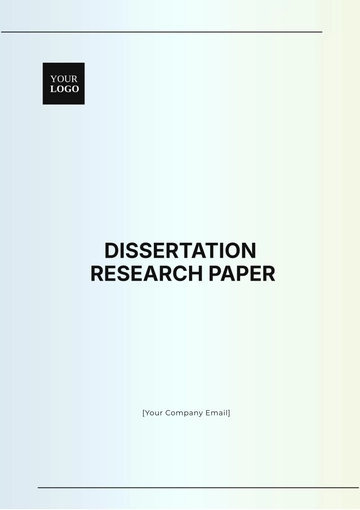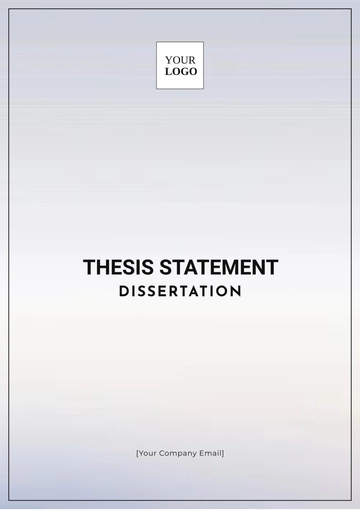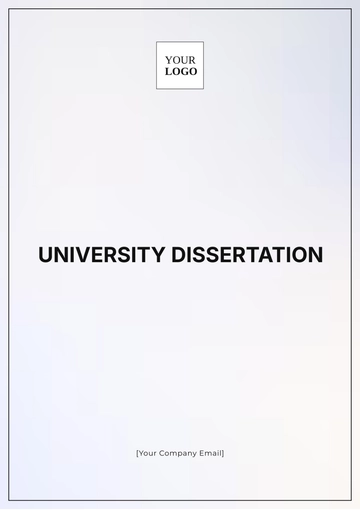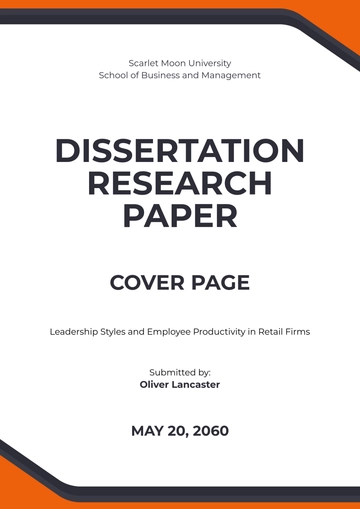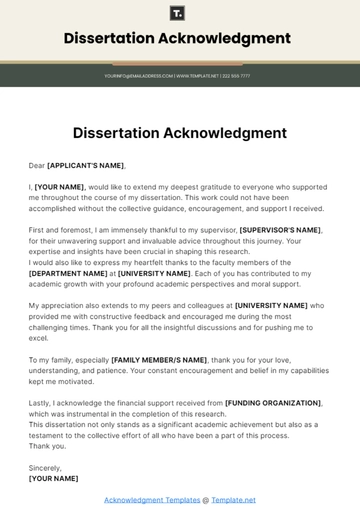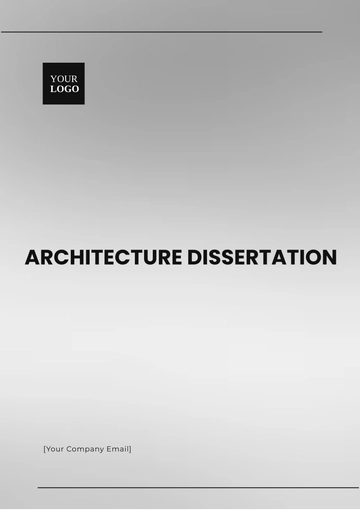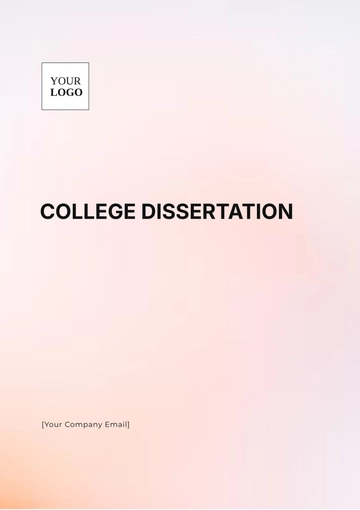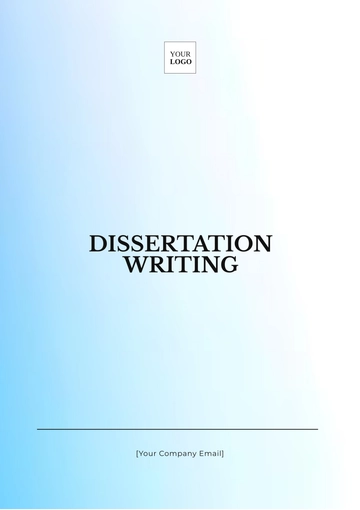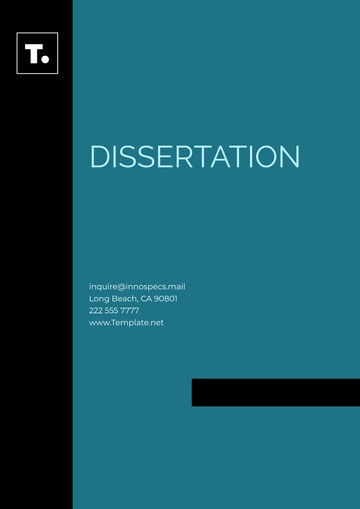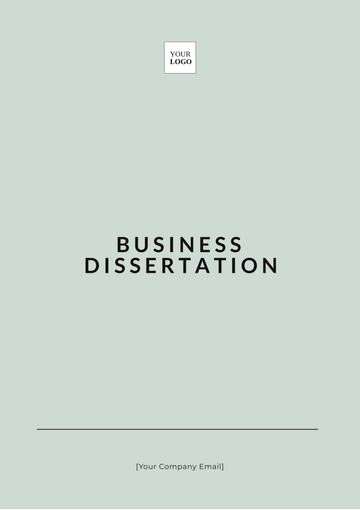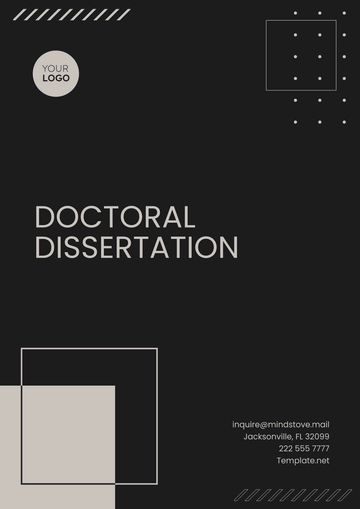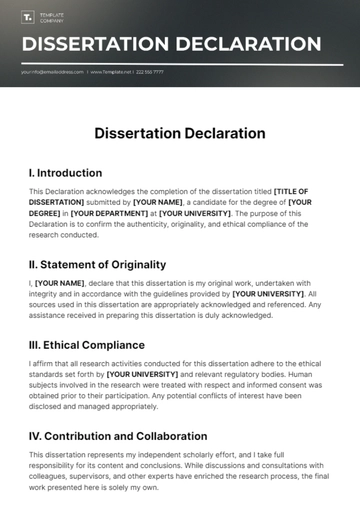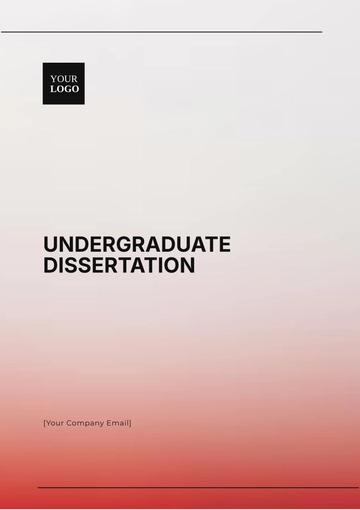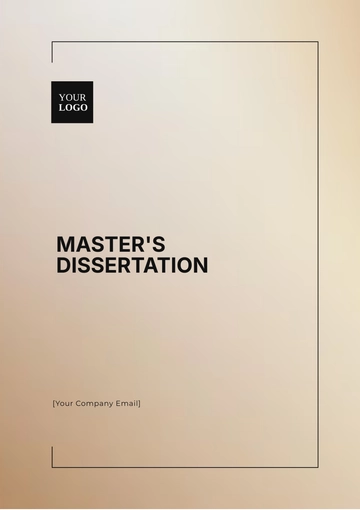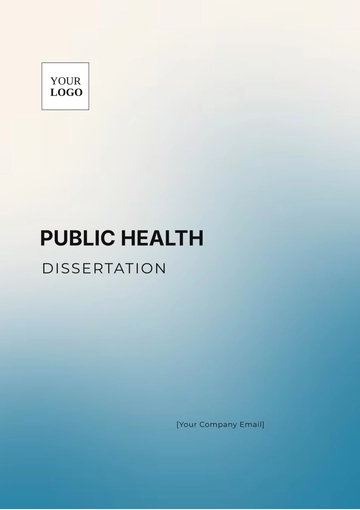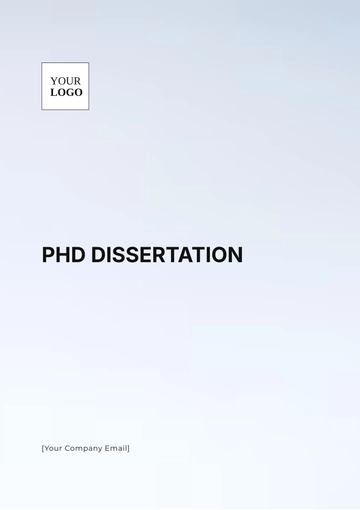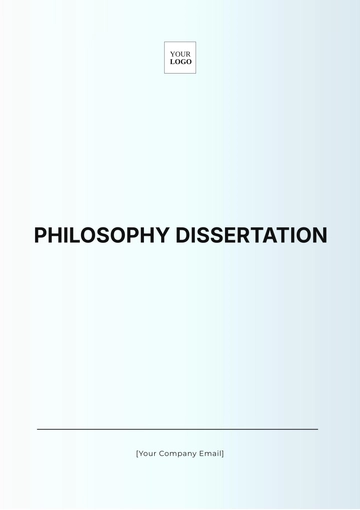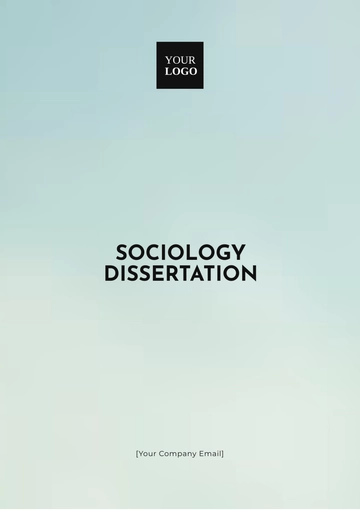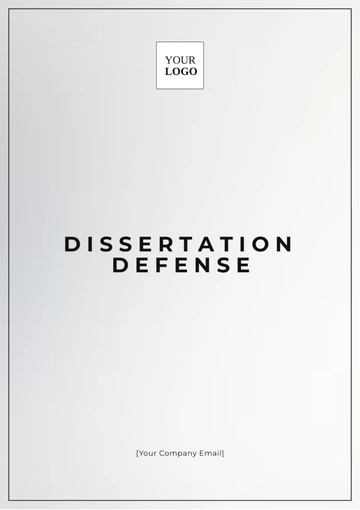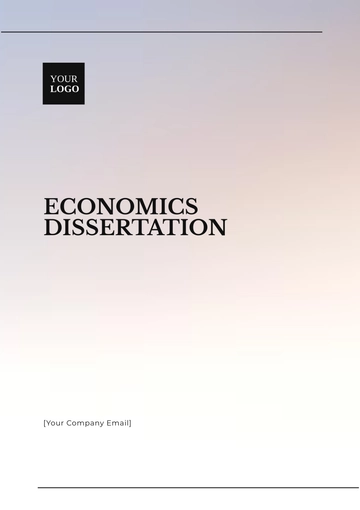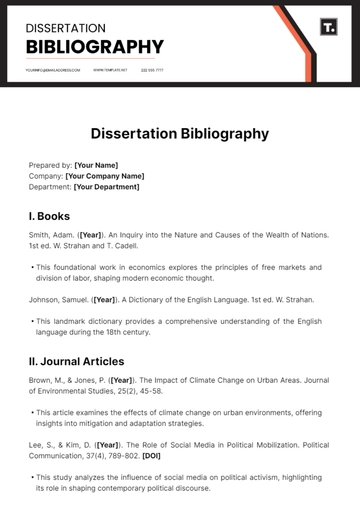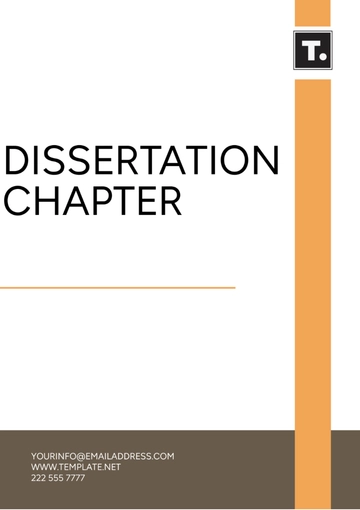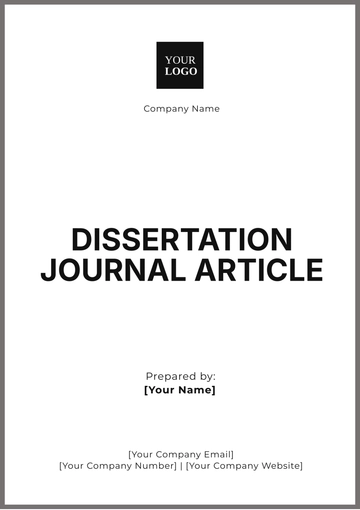Dissertation Submission
Introduction
Dissertation submission is the formal process of submitting a completed dissertation to a university or academic institution as part of the requirements for obtaining an advanced degree, such as a master's or doctoral degree. This document is a comprehensive guide to understanding the various steps, requirements, and best practices involved in the dissertation submission process.
Overview of Dissertation Submission
The dissertation submission process is multi-faceted, involving a series of critical steps that must be carefully followed to ensure the document is accepted by the academic institution. These steps include securing approvals, conducting rigorous research, meticulous writing, and adhering to specific formatting and submission protocols.
Steps in Dissertation Submission
Step | Description |
|---|
1. Proposal Approval | Obtain approval for your dissertation proposal from your advisor and committee. |
2. Conduct Research | Carry out the research as per the approved proposal and methodology. |
3. Write Dissertation | Compose the dissertation following the institution's guidelines. |
4. Review and Revise | Seek feedback from peers, advisors, and editors, then make necessary revisions. |
5. Final Approval | Submit the finalized dissertation to the committee for final approval. |
6. Format Check | Ensure that the dissertation meets the formatting guidelines set by the institution. |
7. Submission | Submit the final version of the dissertation to the institution. |
8. Defense (if required) | Defend the dissertation before a panel of experts. |
Requirements for Submission
Each institution may have specific requirements for dissertation submission, but the following elements are commonly required:
Completed Dissertation Document: Ensure that your dissertation is thoroughly proofread and follows all institutional guidelines for structure, content, and formatting.
Approval Documentation: Obtain signed approval from your dissertation advisor and all committee members, confirming that the dissertation meets academic standards.
Submission Forms: Complete and submit all necessary forms, which may include an abstract submission form, an intellectual property agreement, and any other institution-specific documents.
Supplementary Materials: Include any additional materials that support your dissertation, such as raw data, appendices, multimedia files, or other relevant documents.
Formatting Compliance: Strictly adhere to the institution's formatting guidelines, which may cover aspects such as title page layout, margin sizes, font type, and size, citation format (e.g., APA, MLA), and the organization of chapters and sections.
Submission Platform: Follow the institution's specified submission process, whether it be through an online portal, email, or physical submission.
Common Challenges in Dissertation Submission
Students often face several challenges during the dissertation submission process. Some of the most common challenges include:
Meeting Formatting Guidelines: Adhering to stringent and often complex formatting guidelines can be daunting. Common issues include incorrect margin settings, inconsistent font usage, improper citation styles, and incorrect page numbering. Each institution may have unique requirements, making it essential to carefully review and comply with the specific guidelines provided.
Time Management: Balancing the demands of dissertation research, writing, and revisions with other academic and personal responsibilities can be challenging. Effective time management is crucial to meet submission deadlines without compromising the quality of the work.
Technical Difficulties: Issues such as software incompatibility, corrupted files, or problems with the submission portal can create unexpected obstacles. These technical issues can be particularly stressful if they occur close to the submission deadline.
Regularly Consult with Advisors
Maintain regular communication with your dissertation advisor and committee members to receive timely feedback and guidance.
Start Early: Begin your dissertation research and writing process as early as possible. This allows ample time for thorough research, multiple revisions, and adherence to submission deadlines.
Regularly Consult with Advisors: Maintain consistent communication with your dissertation advisor and committee members. Their feedback is invaluable for refining your research and ensuring that your dissertation meets academic standards.
Use a Checklist: Create a comprehensive checklist of all submission requirements, including document formatting, approval signatures, and supplementary materials. Cross-check each item before the final submission to avoid any omissions.
Back-Up Your Work: Regularly save copies of your dissertation on multiple storage devices, such as external hard drives, USB drives, and cloud storage. Maintaining a version history is also recommended, allowing you to track changes and restore previous versions if needed.
Conclusion
Dissertation submission is a crucial step in the journey toward obtaining an advanced degree. By understanding the process, adhering to guidelines, and implementing best practices, students can navigate the submission process effectively and achieve their academic goals. This guide has provided a thorough overview of the dissertation submission process and offered practical tips to help students succeed.
Dissertation Templates @ Template.net
